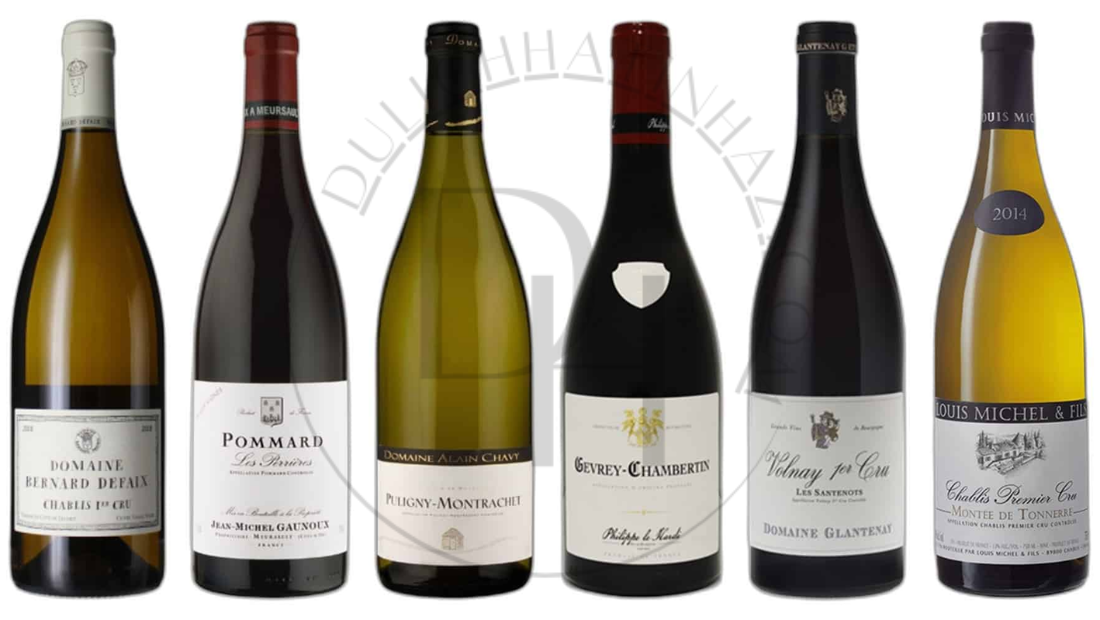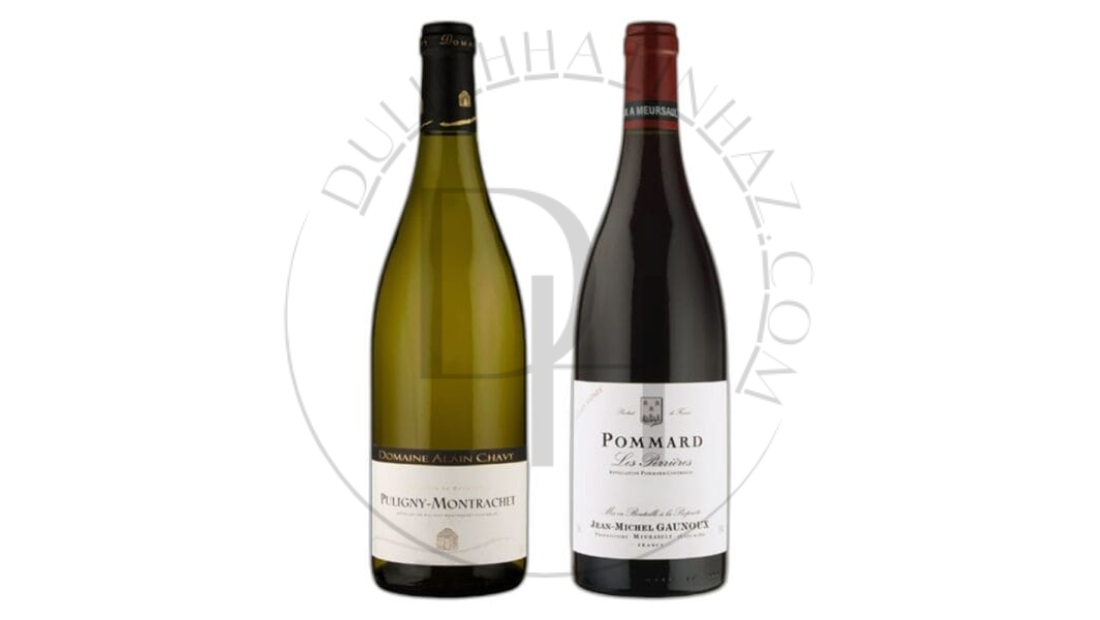Burgundy is one of the most renowned wine regions in the world, famous for its rich history, exceptional terroir, and, most notably, its Grand Cru wines. These wines are some of the most coveted, elegant, and sought-after bottles in the world of oenology. But what exactly makes Grand Cru Burgundy wines so special? This guide dives deep into the essence of Grand Cru Burgundy, exploring what sets these wines apart, the vineyards that produce them, and how to appreciate their complexities. Whether you’re a wine enthusiast or someone just beginning to appreciate the world of fine wines, understanding Grand Cru Burgundy is essential to appreciating the pinnacle of French viticulture.
What Makes Grand Cru Burgundy Wines So Special?
To truly understand the allure of Grand Cru Burgundy, it’s important to first grasp the concept of “Grand Cru.” The term refers to the highest classification in the Burgundy wine hierarchy, a level above Premier Cru and Villages. In essence, Grand Cru wines come from the very best vineyards in Burgundy, located in areas with the most optimal growing conditions, perfect terroir, and the longest winemaking traditions.
The Grand Cru classification was introduced in the 19th century, aiming to highlight those exceptional vineyards that consistently produce superior wines. There are 33 Grand Cru vineyards in Burgundy, all of which are located in the Côte d’Or region, split between the Côte de Nuits (known for its Pinot Noir wines) and the Côte de Beaune (famous for its Chardonnay wines). The wines from these vineyards are renowned for their complexity, depth, and aging potential, with some bottles only revealing their full potential after several decades in the cellar.
The Terroir of Grand Cru Burgundy: A Unique Blend of Nature and Craftsmanship
What sets Grand Cru Burgundy apart is not just the skill of the winemaker, but the region’s unique terroir. Terroir is a French term that refers to the combination of soil, climate, and topography that gives a wine its distinctive characteristics. Burgundy’s climate is continental, with warm summers and cold winters, creating the perfect conditions for grapevine growth. The vineyards themselves are situated on slopes with varied exposures, allowing the grapes to ripen at different rates and contribute to the wine’s complexity.
The soils in Burgundy are also remarkable. Composed of a mixture of limestone, clay, and marl, these soils allow the grapevines to thrive and produce wines with excellent acidity, mineral qualities, and remarkable depth of flavor. These elements, combined with centuries of winemaking expertise, are what make the Grand Cru vineyards of Burgundy so unique. The combination of natural factors and meticulous winemaking techniques results in wines that are highly expressive and reflective of their origin.
Key Grand Cru Vineyards in Burgundy: Where to Find the Best Wines
Burgundy is home to many Grand Cru vineyards, each producing wines that reflect the specific characteristics of its location. Here are some of the most famous Grand Cru vineyards that wine lovers should be familiar with.
1. Romanée-Conti
Perhaps the most famous of all the Grand Cru vineyards, Romanée-Conti is located in the Côte de Nuits and is considered the epitome of Burgundy’s winemaking excellence. Wines produced here are known for their extraordinary elegance, complexity, and ability to age gracefully. With only a few hectares of land, production is limited, making Romanée-Conti wines some of the most expensive and sought-after in the world.
2. Chambertin
Chambertin is another iconic Grand Cru located in the Côte de Nuits. Known for producing some of the richest, most powerful Pinot Noir wines in Burgundy, Chambertin has a reputation for being one of the most collectible and long-lived wines. The wines from this vineyard are known for their dark fruit flavors, firm tannins, and the ability to develop beautifully over time.
3. Le Montrachet
On the other side of the coin, in the Côte de Beaune, lies Le Montrachet, which produces some of the finest Chardonnay wines in the world. Known for its balance of richness and acidity, Le Montrachet wines have a distinct flavor profile with notes of ripe fruit, butter, and honey, making them some of the most exquisite white wines ever made.
4. Clos de Vougeot
Clos de Vougeot is another renowned Grand Cru vineyard located in the Côte de Nuits. The vineyard is surrounded by a stone wall, which gives it its “Clos” designation. The wines from Clos de Vougeot are often described as powerful and structured, with dark fruit flavors, earthy notes, and a long finish. The vineyard produces some of the most iconic wines in Burgundy, and its wines can be aged for decades.
The Winemaking Process: From Vineyard to Bottle
While the terroir of Grand Cru Burgundy plays a huge role in the final product, the winemaking process is just as important. The best winemakers in Burgundy follow traditional methods, relying on centuries of knowledge and techniques passed down through generations.
1. Harvesting
The harvest is typically done by hand, as it allows the winemakers to select only the best grapes. The timing of the harvest is crucial; the grapes need to be picked at the exact moment when they are perfectly ripe, striking the ideal balance of sugar, acidity, and tannins.
2. Fermentation
After the grapes are harvested, they are sorted and gently crushed to extract the juice. The fermentation process varies depending on the type of wine being produced. For red wines, fermentation usually occurs in open-top vats, allowing for a more controlled extraction of color and tannins. For white wines, fermentation often takes place in oak barrels, which imparts subtle flavors and textures to the wine.
3. Aging
Once fermentation is complete, the wines are aged in oak barrels. The aging process is where the wine truly develops its complexity, as the wine interacts with the wood, picking up flavors such as vanilla, spice, and toast. The length of aging varies depending on the wine, with some Grand Cru wines being aged for several years before they are ready for release.
How to Taste and Appreciate Grand Cru Burgundy Wines
Tasting Grand Cru Burgundy wines is an experience in itself. These wines are not meant to be rushed; they are best enjoyed slowly, allowing their complexities to unfold over time. Here are a few tips on how to fully appreciate these exceptional wines.
1. Look at the Color
Start by examining the wine’s color. Grand Cru Burgundy wines, especially reds, typically have a deep, intense color that can range from ruby to garnet, depending on the wine’s age. White Grand Cru Burgundy wines, such as those from Le Montrachet, tend to be a brilliant golden color.
2. Smell the Wine
Swirl the wine gently in the glass to release its aromas. Grand Cru Burgundy wines are known for their complex and evolving nose. Red wines often feature aromas of red fruit, earth, and spice, while white wines are known for their floral and citrus notes, with layers of minerality and oak.
3. Taste the Wine
Take a small sip and let the wine linger on your palate. The best Grand Cru Burgundy wines are balanced, with the right mix of acidity, tannins, and fruit. As you taste, try to identify the various flavors that emerge. With age, these wines often develop additional layers of complexity, revealing notes of leather, tobacco, and forest floor.
4. Consider the Aging Potential
Many Grand Cru Burgundy wines improve significantly with age. If you have the opportunity, try tasting a bottle that has been cellared for several years to experience how the wine evolves over time. Some Grand Cru wines can age for decades, becoming more nuanced and refined with each passing year.
Why Grand Cru Burgundy Wines Are Worth the Investment
While Grand Cru Burgundy wines come with a high price tag, they are often considered a sound investment for collectors and wine enthusiasts. The combination of limited production, exceptional quality, and aging potential means that these wines only become more valuable over time. Furthermore, the prestige of owning and drinking a bottle from a Grand Cru vineyard adds an element of exclusivity and luxury to any collection.
For those who are not collectors but simply enjoy fine wine, investing in a bottle of Grand Cru Burgundy is an experience worth having. Whether you’re celebrating a special occasion or simply indulging in the best wine the world has to offer, a glass of Grand Cru Burgundy will always elevate the moment.
Conclusion: The Timeless Elegance of Grand Cru Burgundy
Grand Cru Burgundy wines are the epitome of fine winemaking. They represent the very best of what the region has to offer, from exceptional terroir to meticulous winemaking practices. These wines are celebrated for their complexity, aging potential, and ability to transport the drinker to the heart of Burgundy itself. Whether you’re a seasoned collector or a newcomer to the world of wine, the allure of Grand Cru Burgundy is undeniable. With every bottle, you are not just tasting wine—you are experiencing history, craftsmanship, and the artistry of one of the most renowned wine regions in the world.

